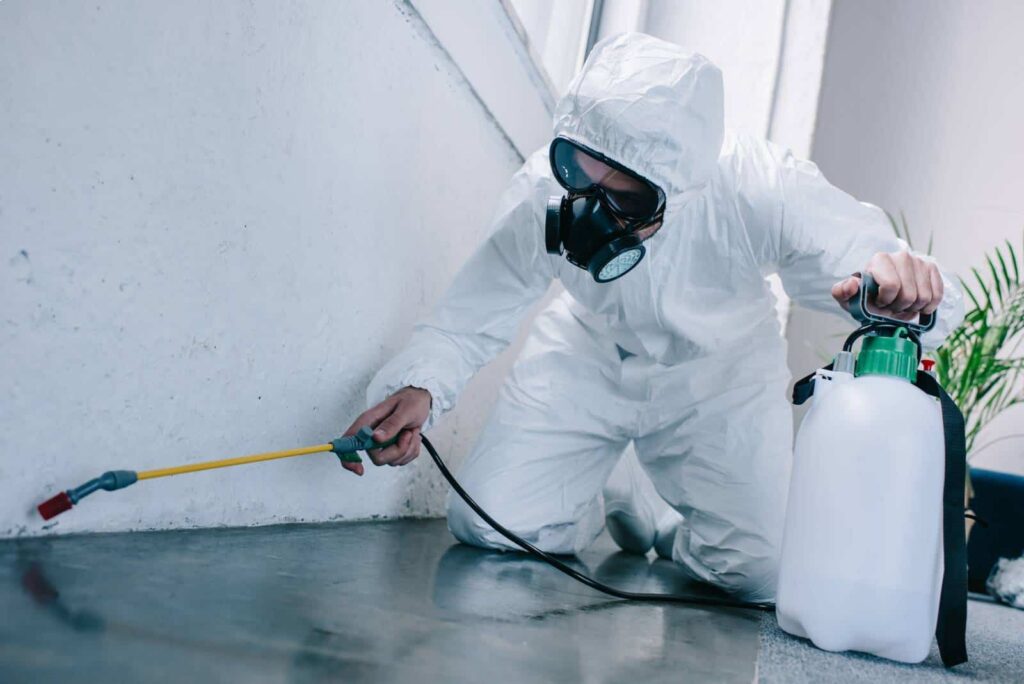If you’ve ever experienced an unwelcome rodent problem in your home, then you know that they are unsightly, unpleasant, and can also be pretty darn destructive. From dangerous munching on wiring to leaving behind droppings, dealing with a rodent infestation can be a severe problem that needs to be taken care of quickly.
However, it is essential to understand the lifecycle of rodents and how pests reproduce if you want to control them effectively. Without this knowledge, even your best efforts at pest control may fail. That’s why in this blog post, we’ll explore the lifecycle of these pesky critters so that you can better identify where they’re coming from and how best to address the issue.
The Lifecycle of Rodents
Understanding the rodent lifecycle is essential for pest control. Rodents are typically born in a nest or burrow that protects them from the elements and potential predators. It only takes a few weeks for them to mature, and they will begin reproducing within two to four months. Adult mice have an average lifespan of one year but can rats can live up to three years under ideal conditions.
It’s essential to be aware of the dangers posed by mature rodents. They spread diseases such as Hantavirus and cause extensive damage to properties as they chew through insulation, wood, and other materials inside homes.
Also, due to their rapid reproduction rate – mice can produce hundreds of offspring throughout their lifetime. As you can imagine, infestations can rapidly spiral out of control if left untreated for too long.
Birth and early life
Rodents reproduce quickly, with females giving birth to litters of up to seven pups. The mother rodent will care for her young until they are ready to strike out on their own, which does not take long.
At birth, a rodent is tiny – blind and hairless – but grows rapidly within days due to its high metabolic rate. By two weeks old, they start developing fur; by three weeks, they can see; by weeks six to eight, they are ready to start the life cycle anew. Rodents will begin reproducing quickly after reaching maturity at around 5-6 weeks old.
Maturation and reproduction
A fast reproductive cycle means rats and rice can quickly expand their population. Mice and rats reach maturity and start breeding shortly after birth. Rats and mice will typically produce 6-12 litters per year with 4-7 offspring in each litter!
This means a single female rodent can potentially give birth to more than one hundred offspring in her lifetime. With such a rapid reproduction rate, homeowners must take proactive steps in rodent control to prevent large infestations from occurring around their homes.
Death of a Rodent
Rodents have relatively short lifespans, and their life cycle can vary significantly from one type of rodent to another. Rats, for example, generally live between 1-2 years in the wild, while some species of mice can live up to 3 years.
Rodents are rarely lucky enough to die naturally of old age; their lifespan is often cut short by disease or predators such as cats or owls.
Even if they manage to avoid these hazards, rodents rarely live beyond two years in the wild due to the competitive nature of their species. Rats are particularly prone to cannibalism, so even if food is abundant, there’s still a chance that less aggressive individuals may be killed off by dominant members of the colony.
The Dangers of Rodents
Rats and mice are far more than just a nuisance; they can cause severe health and property damage. They carry several diseases, spread harmful bacteria, and can quickly reproduce to form large infestations. Rodents can damage electrical wiring and other items in your home with their sharp teeth and claws.
Their droppings also contain allergens that can affect people’s breathing and potentially contaminate food sources when they raid your pantry.
Young children and pets may be particularly at risk when exposed to rodents since they have weakened immune systems. To minimize these risks, it is essential to identify the warning signs of an infestation early on so that you can take action before the problem becomes more extensive.
Rats and mice can chew through walls or floors, create nests in attics or other parts of your home, or leave behind droppings or tracks that point toward a potential infestation. If you notice any of these signs, contact a professional rodent control service immediately for an inspection and treatment plan tailored specifically to your situation.
How Rodents Enter Homes
Rodents are incredibly adept at finding ways into our homes. They can squeeze through impossibly small cracks in walls, doors, and windows that are as small as a quarter inch in size. Common rodent entry points include chimneys, vents, plumbing pipes, garages, crawl spaces, attics, and gaps between foundations and siding.
Inspecting your home regularly for signs of rodent activity or damage caused by their passage is essential. Conditions such as clutter or debris may attract rodents inside since it provides them with hiding spots near food sources. Once they’ve gotten inside your home, they can quickly reproduce and cause an infestation if no action is taken.
Conditions that attract rodents
A rat or mouse will be attracted by a few key conditions. One of the most common is an abundant food source. Spills and crumbs left on surfaces or improperly stored food will entice rodents into your home. Additionally, rodents tend to seek out shelter when outside temperatures drop, which means they may enter structures looking for warmth during winter months.
Finally, rodents prefer cluttered areas where they feel safe from predators to nest in; this includes garages, attics, basements and other storage spaces that aren’t often frequented by humans. Keep these areas free of clutter and sanitation standards high to prevent rodent infestations before they even start.
Are You Ready to Create a Pest Free Home
We all deserve to live in a healthy, pest-free home. Understanding the lifecycle of a rodent, their dangers, how they enter homes, and the signs of an infestation can help you take the necessary steps to get rid of these pests for good.
Pest control for rodents typically involves using traps or bait stations combined with natural repellents like peppermint oil or ultrasonic sound waves. Sanitation also plays a vital role in preventing rodent infestations by eliminating food sources and nesting sites. Lastly, sealing entry points around your home is essential in stopping rodents from entering your home in the first place.
If DIY methods fail to do the trick or there’s already a severe infestation, professional pest control services like Attic Pros offer fast and effective rodent extermination services with guaranteed results and peace of mind.
With their expertise and experience working with different types of rodent species and integrated pest management strategies such as trapping techniques and bait usage, Attic Pros can provide you with a comprehensive rodent treatment plan designed specifically for your situation, including monitoring follow-ups to ensure long-term success.

